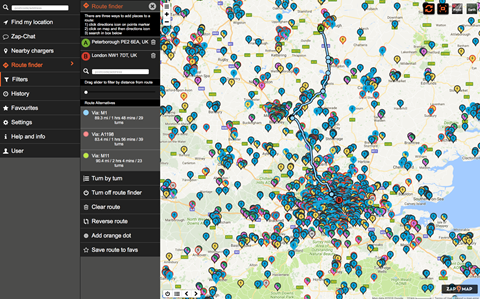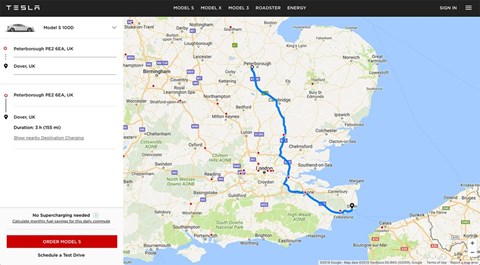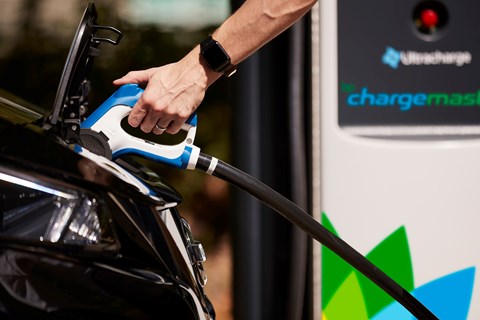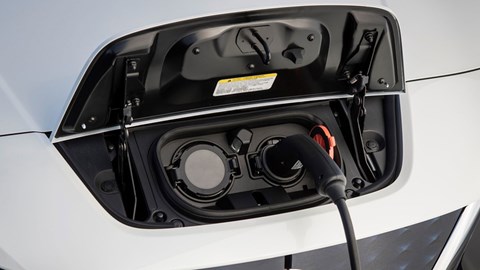► Guide to electric car charging in UK
► The ins and outs of charging your EV
► How to find your nearest charger
Have you been thinking about ditching your petrol or diesel car for an electric one? If so, it might feel like quite a daunting proposition and a big leap to make – but worry not; advances in both technology and infrastructure are making the transition far easier than you might think.
For starters, ever-improving batteries and EV hardware are resulting in notable increases in the real-world range of electric vehicles. This, in conjunction with quicker charging, often means there’s less justification for range anxiety. Similarly, the UK’s charging infrastructure continues to expand and become more easily accessed. If you can charge at home overnight, it might be the case that you rarely have to use a public charging station.
On this page, we’ll explain everything you need to know about EV charging in the UK – from where things are headed, to the types of charger you can currently connect to.
Electric car charging: find your nearest station
ZapMap is one of the most useful resources for any EV owner, and regardless of which electric car you’ve got, it’ll show a good deal of information. To find out your nearest electric charging station, head to this link and then type in your postcode.
After that you’ll be shown a map with all your local EV charging stations, and each site is colour-coded depending on the type of charging on offer. ZapMap has a community element - so you’ll be able to see any problems reported with chargers, too. Google Maps also provides locations for electric car chargers too, so it's easier than ever to find somewhere to top up.

Our guide to electric car batteries
Electric car charging: planning your journey
Most modern EV sat-nav systems include charging stops when planning a route – but if you’re keen to check your route before you get in the car, ZapMap is also the best place to go. You’ll need to create an account first, but after that getting a suitable route is as easy as going to the route planner and entering your destination and starting point.
The map will then show charging stations along the way, and you can drag a slider to show suitable charging plugs further afield if needed.

If you’ve got a Tesla, you’ll be able to use a more bespoke tool. Elon Musk’s EV company launched a journey planner which helps you map out any route with your EV. Because the tool is specific to Tesla, it’s able to carefully calculate your route based on the range of your car – and it’ll also favour Tesla’s own speedier Supercharger network, too. You can try the tool out here.
Further electric car reading
What charging stations are available in the UK?
Ionity is busy launching 40 UK sites, and each will have up to six High-Power Chargers. Using Ionity's 350kW charge network, drivers are able to charge their EVs in less than 20 minutes with renewable energy. The network is being launched in the UK with the first station located in Maidstone in partnership with Motor Fuel Group. Other locations will be set up that will ease travelling to Europe – so expect to see them at convenient motorway locations. For all other UK stations, Ionity partnered with Octopus Energy, an energy technology specialist that will provide 100% renewable energy – reducing environmental impact and providing peace of mind for drivers.
Ionity is a joint-venture between Daimler, BMW, Ford, and the Volkswagen Group (Porsche and Audi) that aims to expand the feasibility of EVs with High-Power Charging (HPC) across UK and Europe. Ionity aims to expand this network by setting up 400 stations (2400 chargers) by 2020 across the whole of Europe.

What's more, BP has now bought Chargemaster, in a move that’ll see the petrol station take over the UK’s largest public network of EV charging points. The new company is called BP Chargemaster, and includes Chargemaster’s 6500 charging points along with BP’s existing 1200 service stations. BP is rolling out 150kW rapid chargers that’ll deliver 100 miles of range in around 10 minutes - providing you have a compatible card, of course. The company has confirmed it'll install 400 of its 150Kw points by 2021, with 100 of those cropping up on forecourts by the end of the year. Progress, indeed.
There's more: Tesco and Volkswagen have also teamed up to add 2400 new EV chargers popping up at 600 branches of the supermarket retailer. Over the next three years, both companies will work with Pod Point to introduce the chargers in selected Tesco Extra and Superstore car parks throughout the UK - and some of them will be free to use, too.
According to Pod Point, the 2400 charger figure includes both 7kW fast chargers and 50kW rapid chargers – and the former will be free to use, although we’re not sure if that’s for all EV owners or just VW drivers. We’re told that the pricing for the 50kW rapids will be in line with market rates, but the split between 7kW and 50kW units hasn't been revealed yet.
InstaVolt has pledged to install 10,000 rapid chargers by 2030. Previously the UK's largest owner-operated public rapid network had set out to deliver 5,000 rapid chargers by 2025, but it has upped its game because of the UK's takeup of EVs.
The company has '1,000 chargers either active, in construction, or in advanced stages of development.' You will have most likely seen an Instavolt at a McDonald's or Costa Coffee. As of September 2021 the firm delivers 1.5GWh (around six million miles) of electrical power a month from 100% renewable sources.

What's the government doing to encourage more EV charging points?
Boris Johnson has pledged investment in Britain's electric car charging network - with a vision that no electric vehicle (EV) owner should be more than 30 miles away from their nearest charge point.
It's part of a £500 million election commitment to expand the 'fast-charging network', announced as part of spending plans to boost the UK's economic growth after Brexit. Johnson made the claims in a visit to the maker of the new plug-in London taxi, the London Electric Vehicle Company. Johnson also announced a target to grow offshore wind power capacity from 30 gigawatts to 40GW by 2030, which could help battery-powered cars be even greener.

Electric car charging: types and connectors
Like any new bit of technology, electric cars currently use multiple standards of connection. But this isn’t as stressful as the Betamax, VHS war though; most cars feature at least two types of connector, and adaptors are easy to use. EVs are very clear on what type of connector you can use, and it’s almost impossible to use the wrong charger in the wrong EV – this isn't like petrol or diesel. What's more, apps such as ZapMap make things even easier: you set the electric car you own, and the app will show you compatible chargers nearby. In a worst-case scenario, you’ll be able to charge – but you might not get the fastest possible charging speed.
At present, charging comes in three flavours, with a handful of different connections used for each.
1. Rapid chargers
As you’d expect, these are the fastest type of charger, and comes in both AC and DC forms. Both of these standards operate at between 43kW to 50kW of power, and that means they’re able to charge 80% of a battery in 30 minutes to an hour. Rapid AC chargers will use a Type 2 connector, while Rapid DC connectors use CCS or the catchy CHAdeMO standard. And one more thing. Tesla’s Superchargers count as rapid chargers, and they use their own bespoke connection to achieve transfer of up to 120kW. Still, adaptors are available.
2. Fast chargers
A fast charger is anything classed as between 7kW and 22kW, and will charge an EV in up to four hours. While not as fast as rapid chargers – and about four-times slower – they are probably the most common type of charger in the UK right now. These are ideal for home use, too.
3. Slow chargers
A slow charger is regarded as anything up to 3kW, and is therefore used primarily for overnight charging. This is trickle-charging for electric cars, and your last resort when it comes to topping up. The good news? You can use any domestic three-pin plug to slow charge at home. The bad news? It’ll take between hours and maybe even days, depending on the size of your battery...
Further electric car reading
The best electric cars and EVs on sale today
How much does it cost to charge an electric car?
The best hybrids, plug-ins and PHEVs
Wireless electric car charging